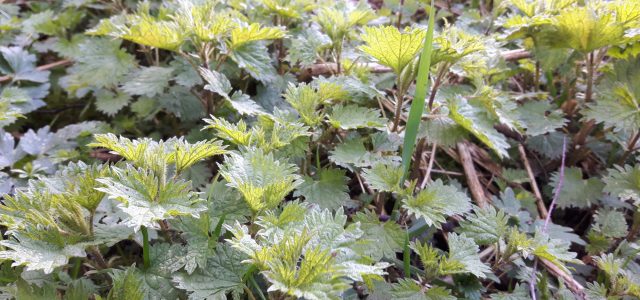
GO WILD…
Renowned wild food forager James Wood takes a look at nettles, where to find them and how to cook with them
In this issue we’re looking at one of the most prolific plants throughout the UK, you can find it everywhere from field edges to derelict sites. It’s a plant that most of us have dealt with in the past – it has built up quite a bad name for itself. Of course, I’m talking about stinging nettles!
Most people have heard of nettle soup but there’s so much more you can do with this plant. Not only can be it be made in to pesto, crisps, smoothies and more – it is also packed with vitamins and minerals and if it was available on the supermarket shelves, it would definitely be classed as a super-food!
Even better it doesn’t have the high price associated with other super foods – it is indeed free to anyone willing to don a pair of rubber gloves and pick them from your local wild spaces.
We pick ours with a pair of Marigolds on, long sleeved top and a pair of scissors. Ideally you want to chop off only the tops of the nettle, the top four to six leaves to the tip are the most fresh and tasty part of the plant and if you leave the rest of the plant it will continue to grow new shoots for you to pick through the year. Either smashing the leaves in a pestle and mortar or blender, steaming, frying or cooking will remove any sting from the leaves, so you can eat the plant happily.
Stinging Nettle (Urtica dioica)
The stinging nettle is a herbaceous perennial, growing back yearly. Typically groups of male and female plants grow separately. It has widely spread rhizomes that are bright yellow along with the roots.
The stem grows one to two metres tall through the summer and dies down to ground through the winter. It is hollow, ribbed and houses many fine hairs and stinging needles. Leaves are pale green, turning darker throughout the year – they have a wide base and a pointed tip with a heavily serrated margin, growing from three to 15cm and are placed oppositely up the stem. It bears very small flowers in densely packed axillary inflorescences.
James Wood is a renowned wild food forager running wild food cookery and foraging courses throughout England. His Book ‘The Foragers’ Cookbook’ is now available through Amazon

